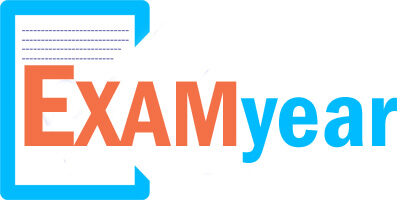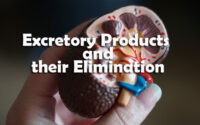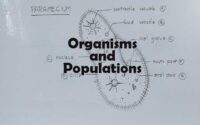Chemical Coordination
1. A temporary endocrine gland in the human body is—
A. Pineal gland
B. Corpus cardiacum
C. Corpus Luteum
D. Corpus allatum
2. GnRH, a hypothalamic hormone, needed in reproduction, acts on—
A. anterior pituitary gland and secretion of LH and oxytocin.
B. anterior pituitary gland and secretion of LH and and FSH
C. posterior pituitary gland and secretion of oxytocin and FSH.
D. posterior pituitary gland and secretion of LH and relaxin.
3. Hypersecretion of Growth Hormones in adults does not cause further increase in height, because-
A. Growth Hormone becomes inactive in adults.
B. Epiphyseal plates close after adolescence.
C. Bones loose their sensitivity to Growth Hormones in adults .
D. Muscle fibres do not grow in size after birth.
4. A decrease in blood pressure/volume will not cause the release of—
A. Renin
B. A trail Natriuretic Factor
C. Aldosterone
D. ADH
5. The posterior pituitary gland is not a ‘true’ endocrine gland because-
A. It is provided with a duct
B. It only stores and releases hormones
C. it is under the regulation of hypothalamus
D. It secretes enzymes
6. Graves‘ disease is caused due to —
A. hyposecretion of thyroid gland
B. hypersecretion of thyroid gland
C. hyposecretion of adrenal gland
D. hypersecretion of adrenal gland.
7. Name a peptide hormone which acts mainly on hepatocytes, adipocytes and enhances cellular glucose uptake and utilisation.
A. Insulin
B. Glucagon
C. Secretin
D. Gastrin
8. Which of the following represents the action of insulin?
A. Increases blood glucose level by stimulating glucagon production.
B. Decreases blood glucose level by forming glycogen.
C. Increases blood glucose level by promoting cellular uptake of glucose.
D. Increases blood glucose level by hydrolysis of glycogen.
9. This hormone reduces cellular glucose uptake and utilisation.
A. Glucagon
B. Insulin
C. Aldosterone
D. Thymosin
10. The hormone ‘melatonin’ is secreted by the gland
A. Pineal
B. Thyroid
C. Pituitary
D. adrenal
11. Gonadotropin releasing hormone is transferred to anterior pituitary by—.
A. left coronary artery
B. hypophysical portal veins
C. axons of neurosecretory cells
D. nuclei of hypothalamus
12. Which one of the following causes the mammary glands to enlarge at puberty?
A. Testosterone
B. Progesterone
C. Estrogen
D. Oxytocin
13. Which one of the following hormones is not involved in sugar metabolism?
A. Insulin
B. Glucagon
C. Cortisone
D. Aldosterone
14. Which one of the following hormones though synthesised elsewhere, is stored and released by the master gland?
A. Prolactin
B. Melanocyte stimulating hormone
C. Antidiuretic hormone
D. Luteinising hormone
15. Which one of the following enzymes is responsible for the conversion of norepinephrine to epinephrine?
A. Catecholamine-O-methyltransferase
B. PhenylaIanine-N-methyltransferase
C. DOPA decarboxylase
D. Monoamine oxidase
16. Which hormone is responsible for reabsorption of water in kidney?
A. ADH
B. STH
C. ACTH
D. GTH
17. Which one of the following secretes glucagon?
A. Beta (β) cells of islets of Langerhans
B. Alpha (on) cells of islets of Langerhans
C. Acidophilic cells of adenohypophysis
D. Basophilic cells of adenohypophysis
18. Melatonin is produced from—
A. pineal gland
B. adrenal gland
C. parathyroid gland
D. ovary
19. Tetraiodothyronine is—
A. T3
B. Thyroxine
C. TSH
D. TRH
20. A hormone which is not glycoproteinaceous in nature is—
A. LH
B. hCG
C. FSH
D. ADH
21. Function of somatostatin is to-
A. Stimulate pituitary synthesis and release gonadotrophins
B. Inhibit the release of gonadotrophins from pituitary
C. Stimulate pituitary and promotes secretion of growth hormone
D. Inhibit the release of growth hormone from pituitary
22. The pars distalis region of pituitary does not produce these hormones-
I. Melanocyte stimulating hormone
II. Vasopressin
III. Prolactin
IV. Growth hormone
A. III only
B. I and IV
C. II and IV
D. I and II
23. The condition in which the kidneys fail to conserve water leading to water loss and dehydration due to impaired ADH synthesis or release in—
A. Grave’s disease
B. Addison’s disease
C. diabetes insipidus
D. cretinism
24. In hormone action, if receptor molecules are removed from the target organ, the target organ will-
A. continue to respond to hormone
B. not respond to hormone
C. continue to respond but requires higher concentration.
D. continue to respond, but in the opposite direction.
25. The lobe of pituitary that secretes melanocyte stimulating hormone is-
A. anterior lobe
B. posterior lobe
C. intermediate lobe
D. none of these
26. Assertion (A). Hormones interacting with cell surface receptors do not enter the target but they generate second messenger-
Reason (R). Glucocorticoids bind to intracellular receptors and regulate gene expression
A. Both A and R are true and R is correct explanation of A
B. Both A and R are true but R is not correct explanation of A.
C. A is true but R is false
D. A is false and R is true.
27. Find out the correct layers in T.S. adrenal gland—
A. Medulla—Zona reticularis—Zona fasciculata-Zona glomerulosa
B. Zona glomerulosa—Medulla—Zona reticularis -Zona fasciculata
C. Zona glomerulosa—Zona fasciculata—Zona reticularis—Medulla
D. Zona reticularis—Zona fasciculata—Zona glomerulosa—Medulla
28. Select the mismatched pair from the following-
A. Glucagon—glycogenolysis
B. Prolactin—milk production
C. Insulin—Gluconeogeneis
D. Oxytocin—Contraction of uterine muscles.
29. Atrial natriuretic factor (ANF) decrease—
A. Blood pressure
B. Secretion of renin
C. Na+ secretion
D. Vasodilation
30. Select the correct statement about hormones and their actions.
A. Parathyroid hormone increase K+ absorption of the body.
B. Insulin and glucagon helps to maintain blood sugar levels.
C. Old aged people have weak immunity due to increased activity of thymus.
D. Osteoporosis in women occurs due to increased levels of estrogens.
31. Which one of the following pairs of hormones are the examples of those that can easily pass through the cell membrane of the target cell and bind to a receptor inside it (mostly in the nucleus?)
A. Insulin, glucagon
B. Thyroxine, insulin
C. Somatostatin, oxytocin
D. Cortisol, testosterone
32. Fight-or-fight reactions cause activation of—
A. the parathyroid glands, leading to increased metabolic rate
B. the kidney, leading to suppression of reninangiotensin-aldosterone pathway
C. the adrenal medulla, leading to increased secretion of epinephrine and norepinephrine
D. the pancreas leading to a reduction in the blood sugar levels.
33. Identify the hormone with its correct matching of source and function.
A. Oxytocin—posterior pituitary, growth and maintenance of mammary glands.
B. Melatonin-pineal gland, regulates the normal rhythm of sleepwake cycle.
C. Progesterone—corpus luteum, stimulation of growth and activities of female secondary sex organs.
D. Atrial natriuretic factor—ventricular wall, increases the blood pressure.
34. Cells die at the time of release of secretory materials in—
A. holocrine gland
B. apocrine gland
C. merocrine gland
D. mixed gland.
35. Which of the following hormones is a derivative of fatty acid?
A. Gastrin
B. Thyroxine
C. Estrogen
D. Prostaglandins
36. Which of the following pituitary hormones is secreted without the involvement of a releasing hormone (RH)?
A. Thyroid Stimulating Hormone (TSH)
B. Follicle stimulating hormone (FSH)
C. Oxytocin
D. Prolactin
37. Human endocrine gland regulating body rhythms is—
A. Adrenal
B. Pineal
C. Thymus
D. Thyroid
38. Which of the following statements is wrong?
A. Sella turcica is a bony cavity where the pituitary gland is located
B. Parathyroid hormone decreases the Ca2+ levels in blood.
C. Thymosins play a major role in T cell differentiation.
D. The middle layer of adrenal cortex is zona fasciculata.
39. Which one of the following hormones also proudces anti-inflammatory reactions in man and suppresses the immune response in addition to its primary functions?
A. Thyrocalcitonin
B. Cortisol
C. Erythropoietin
D. Thymosin
40. The presence of which of the following in urine is indicative of diabetes mellitus?
A. Urea
B. Glucose
C. Water
D. Na+
41. Deficiency of thyroxine in an adult causes a disease characterised by low BMR, low body temperature, scaly skin etc. The disease is—
A. myxoedema
B. cretinism
C. Grave’s disease
D. Basedow’s disease
42. Hormones are chemical compounds which can be-
A. Protein only
B. steroid only
C. carbohydrate only
D. proteins, steroids and other diphenyl amines.
43. A pregnant female delivers a baby who suffers from stunted growth, mental retardation, low intelligence quotient and abnormal skin. This is the result of-
A. cancer of the thyroid gland
B. over secretion of pars distalis
C. deficiency of iodine in diet
D. low secretion of growth hormone.
44. Which of the following statements is correct in relation to the endocrine system?
A. Non-nutrient chemicals produced by the body in trace amounts that act as intercellular messenger are known as hormones.
B. Releasing and inhibitory hormones are produced by the pituitary gland.
C. Adenohypophysis is under direct neural regulation of the hypothalamus.
D. Organs in the body like gastrointestinal tract, heart, kidney and liver do not produce any hormones.
45. GnRH secreted from hypothalamus mainly stimulates the release of—
A. Thyroxin from thyroid gland
B. ADH from posterior pituitary
C. FSH and LH from anterior pituitary
D. Aldosterone from adrenals.
46. Which of the following is not a function of progesterone?
A. Gestation
B. Inhibition of ovulation
C. Uterine growth and development
D. Stimulation of mammary secretion
47. Part of adrenal cortex which secretes cortisol is—
A. Zona glomerulosa
B. Zona reticularis
C. Zona fasciculata
D. Zona pellucida
48. Assertion. Iodine deficiency causes goitre.
Reason. Reduced iodine intake decrease thyroxine production.
A. Both are true, with reason being correct explanation
B. Both are true but reason is not correct explanation
C. Assertion is true but reason is wrong
D. Both are wrong
49. Assertion. A male lacks facial and pubic hair.
Reason : There is hyposecretion of testosterone from Leydig cells
A. Both are true with reason being correct explanation
B. Both are true but reason is not correct explanation
C. Assertion is true but reason is wrong
D. Both are wrong
50. Assertion. Oxytocin is also called antidiuretic hormone.
Reason. Oxytocin increases renal reabsorption of water.
A. Both are true with reason being correct explanation
B. Both are true but reason is not correct explanation
C. Assertion is true but reason is wrong
D. Both are wrong



